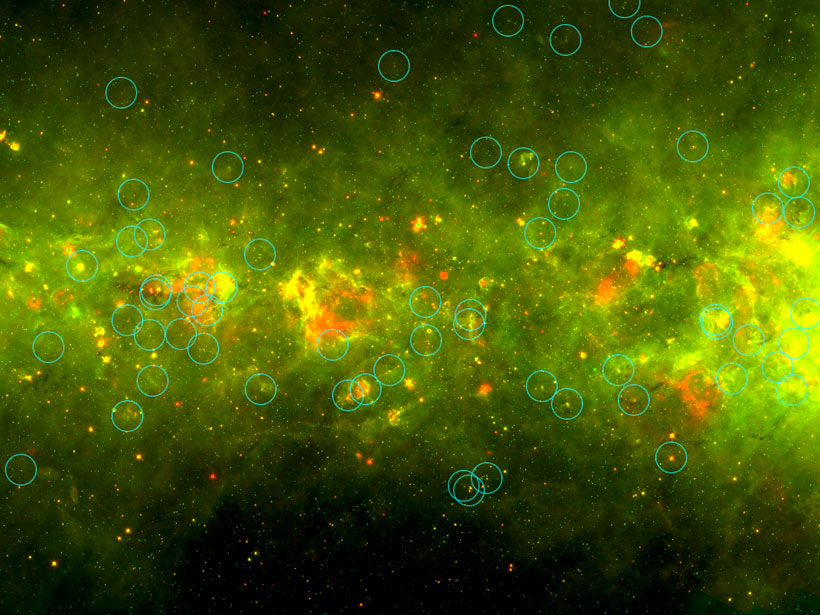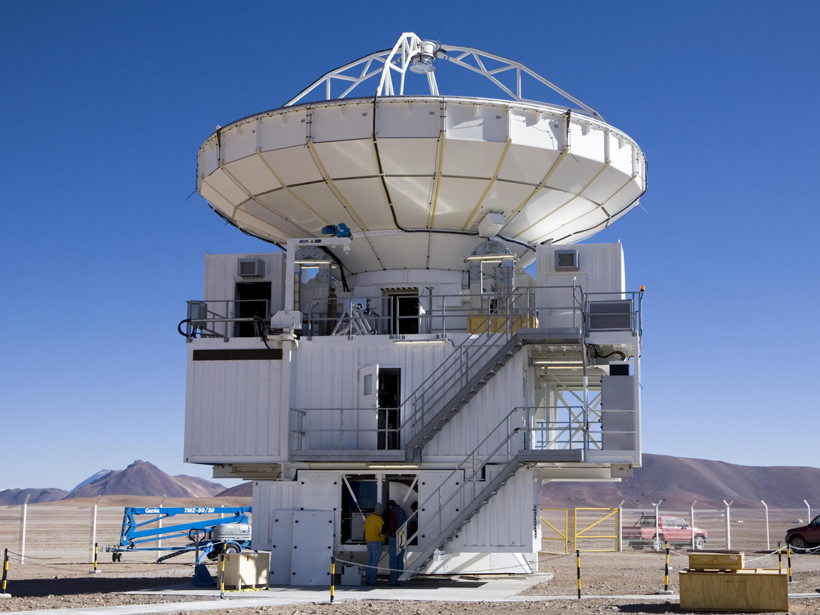The online community of the Milky Way Project citizen scientists helped scientists identify compact star-forming regions now known as yellowballs.
Milky Way
Posted inNews
A Decade of Atmospheric Data Aids Black Hole Observers
Astrophysicists are using a global atmospheric model to help them coordinate a multicontinent, radio-frequency observing campaign to gaze at the black hole at the center of the Milky Way.


